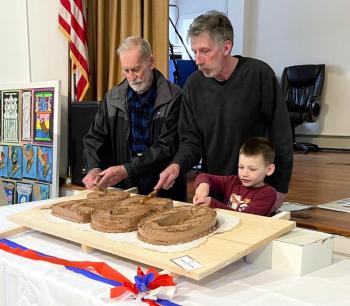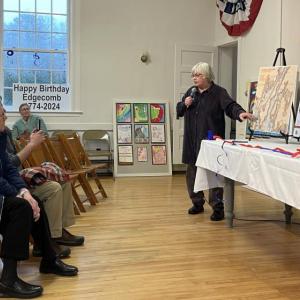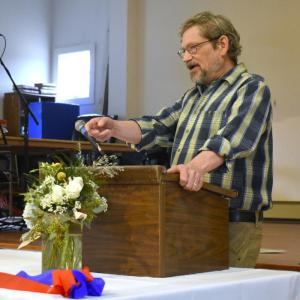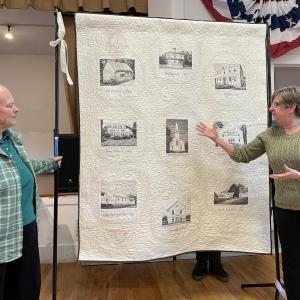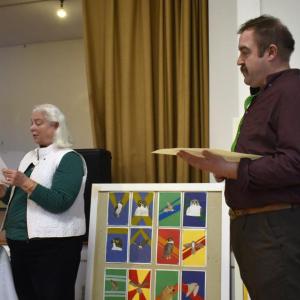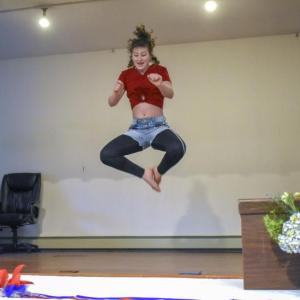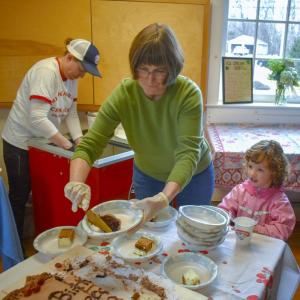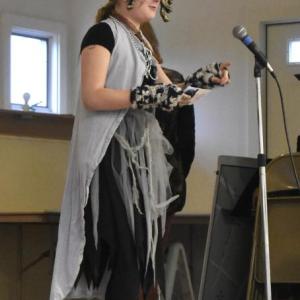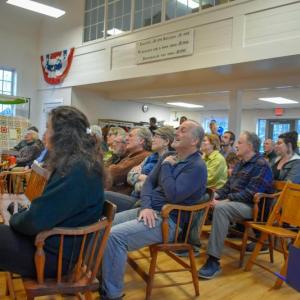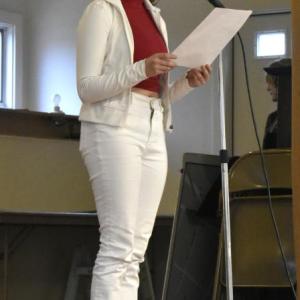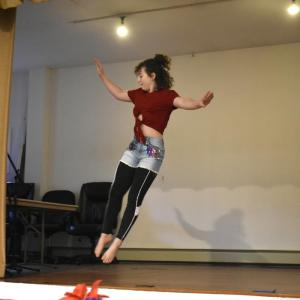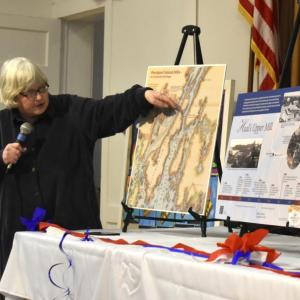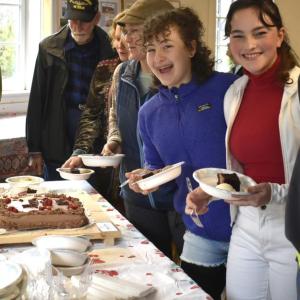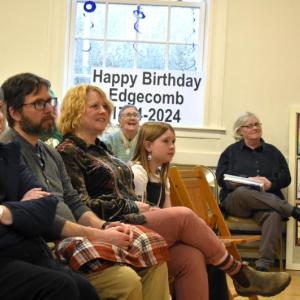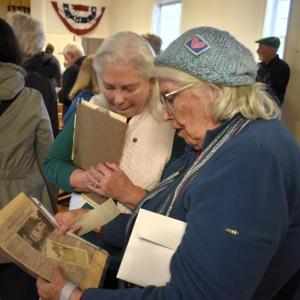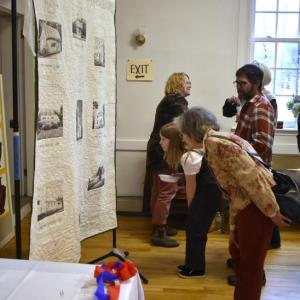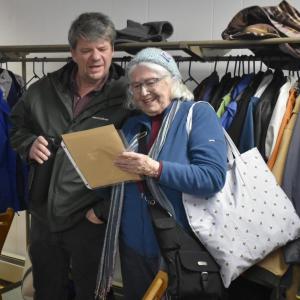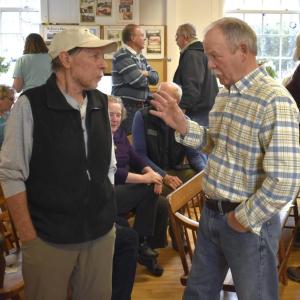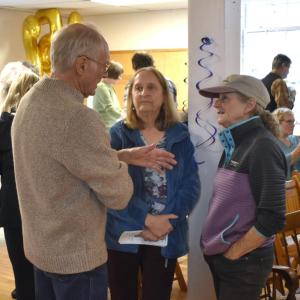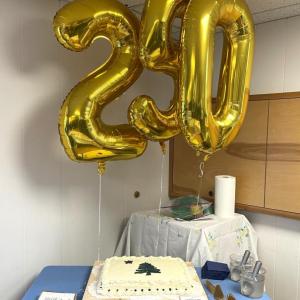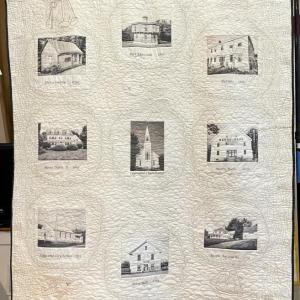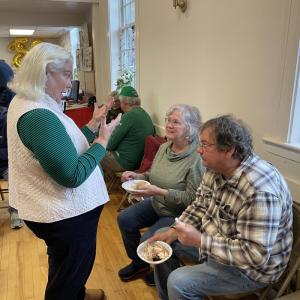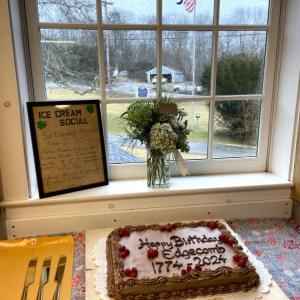Edgecomb celebrates 250th
About 100 people filled the Edgecomb town hall March 17 to celebrate. As rain pattered outside, residents gathered to honor the town’s official March 4, 1774 birthday by sharing art, history and stories with neighbors and friends.
Selectman Mike Smith said he was pleased with the turnout for the event, rescheduled from early March due to foul weather. The selectboard hosted the event with help from Edgecomb Historical Society. Smith said he saw a mix of longtime residents and newer ones, and he was happy to celebrate with all of them.
“I've always found the vast majority of people in town are easy to get along with, want things to succeed, hate traffic, and would man the fort if we needed them to,” he said.
The celebration opened with performances by students from the Center for Teaching and Learning, who had also helped decorate the building with their art. They performed classically themed poetry and monologues based on their recent curriculum on ancient Greece. Others performed works celebrating Edgecomb and Maine, and their natural beauty.
Jack Brennan, a trustee of Edgecomb Historical Society, said the performances fit perfectly into the theme of the party: the present, past and future generations of Edgecomb. In that spirit, the ceremonial cake was cut by Smith, senior resident Willis Clifford and 5-year-old Reid Carver.
Later, Deb Boucher and Fran Mague presented a handmade quilt honoring Edgecomb. Boucher is a professional quilter and said she and Mague, who was Boucher’s quilting teacher, wanted to do something nice for the town.
“I'm very pleased with it. Really pleased with it. I'm very happy,” Boucher said. “As soon as it was put together, my mind just started to turn (about) how I was going to make it pop.”
The quilt features nine important Edgecomb sites including the Marie Antoinette House, Merry Barn and Fort Edgcomb. The sites are arranged in an oval, surrounded by stitched images of Edgecomb’s historically significant industries such as oysters, blacksmithing and shipping. The quilt is bounded by two rivers, representing the Damariscotta and Sheepscot.
Selectmen Michael Maxim and Lynn Norgang read a proclamation from the Legislature and a letter from Gov. Janet Mills both honoring the town’s 250th year.
Edgecomb Historical Society sponsored two talks. Mary Ellen Barnes first gave a lecture on the historic relationship between Edgecomb and Westport Island. Later, Edgecomb author Van Reid talked about his family's connections to Edgecomb and what life was like in days past.
Reid told stories about people who lit up the town with feats of humor, strength and kindness. From a wayward husband who ran off with money meant to buy molasses to his own relative who saved an old horse from sure death, Reid told about the day-to-day life that forms a community. However, he admitted the history of Edgecomb is like many other New England towns, where ambitious and hardworking people tried to dig a hard living out of rocky soil; the residents were remarkable, but so were those in neighboring towns.
Reid ended his talk with a lesson. He encouraged the audience to ask questions of their grandparents, parents and people around them or else lose the stories and details that make up a community’s history. The point was not lost. “There's so many talented people on the peninsula, in this area, that it’s just amazing,” said Brennan. “And everyone you meet, including yourself, has a story to tell.”
Brennan said forgetting history is forgetting a part of what real life is about. He said stories help recognize families, whether from Edgecomb or away, who have made Maine a wonderful place, and are a celebration.
"If you look out here, you see everyone talking. And what are they doing? They're sharing stories of their families,” he said, waving his hand across a room full of people talking and laughing as the band played. “All of them are storytellers. And I think if you lose storytelling and oral tradition, and that's what it's all about, oral tradition, then what do you have? You don't have much.”


